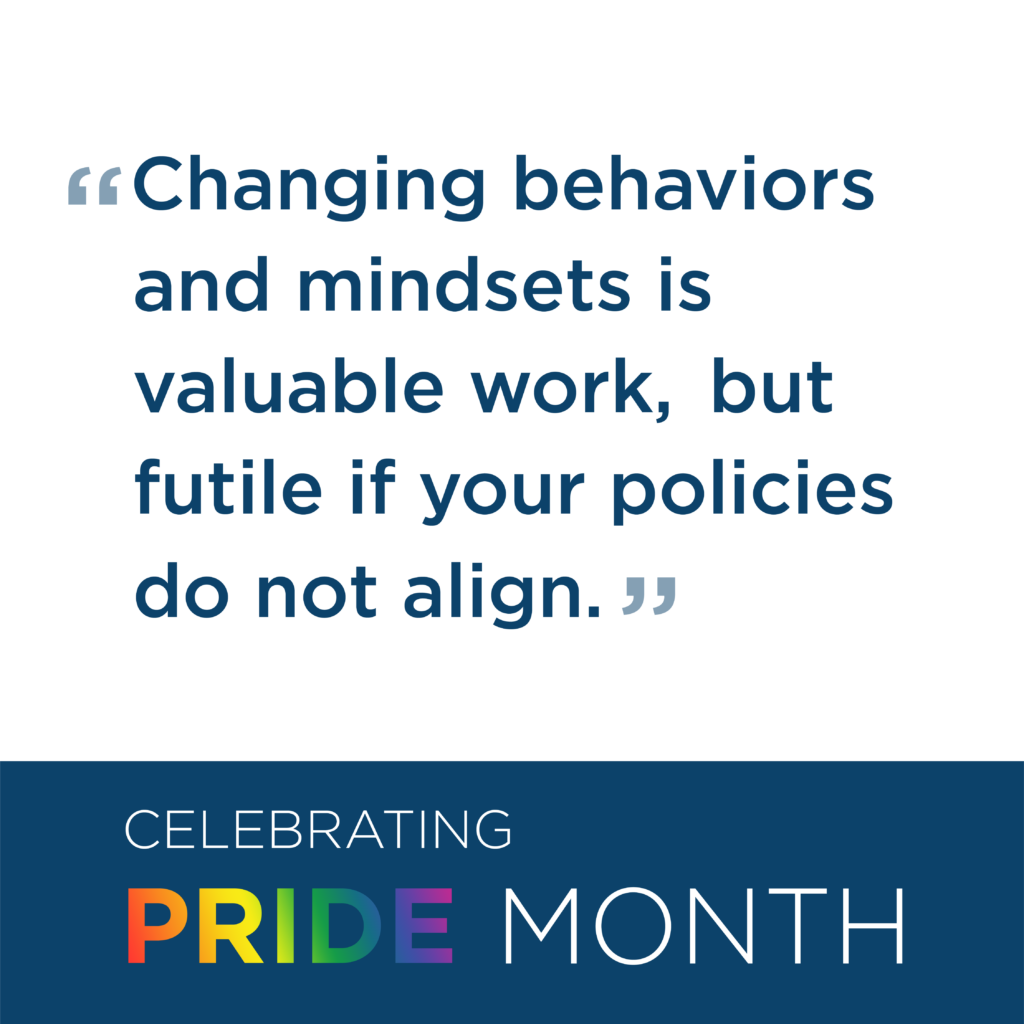Happy Pride Month! This June is all about celebrating the progress and triumphs of the LGBTQ+ community and examining ways to keep that progress going. Think Up’s dedication to diversity, equity, inclusion, and belonging keeps us constantly striving to be better on a personal level and as an organization. We want to share a few tips on fostering more inclusivity in your organization for your LGBTQ+ employees, by taking a critical look at some common workplace practices.
DRESS CODES
Dress codes have long been a topic of conversation when it comes to creating a fair workplace. The purpose of this policy is to enforce safe and functional attire that aligns with the brand of the organization. However, when a dress code policy is littered with gendered language, stereotypes, and biases, it begins to veer away from its intended purpose. Dress code policies should simply be a clear guideline that can apply to everyone regardless of gender and that allows all employees to wear the attire they feel most comfortable in while adhering to brand standards.
BENEFITS & HEALTHCARE
When it comes to benefits and healthcare, the LGBTQ+ community is a long way away from equality. Benefits are not always offered to LGBTQ+ couples and unmarried partners and healthcare plans can sometimes omit transgender and intersex healthcare options. If you want to push your organization in the right direction, examine your current healthcare options and look for any traditionally discriminatory exclusions. If your organization is unable to provide gender affirming care, it is best to disclose that information to future and current employees.
CONFIDENTIALITY & PRIVACY
You would be doing a disservice to your organization by failing to consider the possibility of an employee transitioning and their preference on disclosing their gender transition status. Consider adding policies to accommodate gender transition and remember that information related to gender orientation, identity, etc. should be treated with as much care as any other private employee information. Although all employees must provide their legal name and gender on all legal documents, your organization should have a system for recognizing a person’s chosen name and pronouns within internal servers, email addresses, and communications.
NONDISCRIMINATION POLICY & ACCOUNTABILITY
Every organization should have a nondiscrimination policy. To ensure your LGBTQ+ employees are protected, make sure these dimensions are included: “sex”, “sexual orientation”, “sex characteristics”, and “gender identity”. Although some may seem similar, adding these specific dimensions will ensure that your transgender or intersex employees are protected within your policy. With that in mind, there should also be a clear process to investigate any violation of this policy, including anti-retaliation policies.
Keep in mind: everything communicates. If you promise an inclusive workplace to your future and current LGBTQ+ employees, yet your policies do not protect them, you’re communicating that your dedication to diversity is surface level, at best. Changing behaviors and mindsets is valuable work, but futile if your policies do not align. Think Up Consulting encourages you to review your policies this month and plan to move forward with pride.



